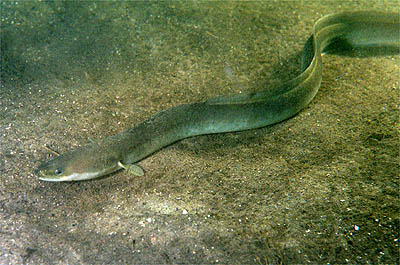There are some mysteries in the world that I don’t think people really want to see solved. We like not knowing, we love speculating, and anyone who has ever made a movie will tell you the monsters we don’t see are always scarier than the ones we do.
Maybe that’s why, even though there have been some really educated guesses on what, exactly, people see in Loch Ness, we’ve never settled on an answer.
Could it be a “super” eel? Maybe.

Image Credit: iStock
The “eel hypothesis” suggests that European eels, particularly the giant Anguilla anguilla could be able to trick the eye enough to make them appear to people as the Loch Ness monster.
Guesses on the monster’s size range from 3.3-6.6 feet based on the Surgeon’s Photograph, and go up to 49-66 feet if you’re using the Flipper Photograph for reference.
The authors of the new study (and the theory) claim that if Nessie is on the smaller size, there could be several of them in a body of water the size of Loch Ness.
“Thus, if there are any, there may be many. If it’s real, could it be an eel?”
The researchers looked at data from the loch to figure out how many eels have been pulled out of the water, and what sizes were documented. Most of them are on the smaller size, leading them to conclude the chances of seeing a large one would be on the rare side.
“However, this is not quite the ‘monster postulated.’ Indeed, the probability of finding a 6-meter [20-foot] eel in Loch Ness is essentially zero; too low for the software used to provide a reliable estimate. Thus, while large eels may account for some eyewitness sightings of large, animate objects rising to the loch surface, they are unlikely to account for ‘sightings’ of extraordinarily large animals, which may be accounted for by wave phenomena, the occasional stray mammal, or other.”
If it’s unlikely, then why are we talking about this hypothesis at all?
Well, because this modern data doesn’t line up with past studies of eels in the loch, which include lots of material from A. anguilla, which does grow to those larger sizes quite regularly.

Image Credit: Creative Commons
And, you know. The shape really checks out.
What it all boils down to is that one of the world’s most enduring monster mysteries is still waiting to be solved.
Which is exactly how I suspect most people prefer it.






